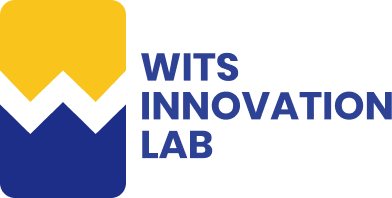Published - 2 years ago | 10 min read
Trust, Risk, and Security: AI TRiSM's Role in Shaping Extended Reality
AI TRiSM (Artificial Intelligence for Trust, Risk, and Security Management) is an innovative model that uses AI technologies to strengthen trust, decrease risks, and increase security in many areas. This framework integrates AI algorithms, machine learning techniques, and data analytics to address complex problems concerning trust, risk, and security management. Through AI utilization, organizations can preemptively find potential threats, foretell risks, and improve security measures to assure the safety of essential assets and information.
AI TRiSM covers a wide spectrum of usage, namely fraud detection, cybersecurity, compliance monitoring, and risk assessment. Using cutting-edge data processing and analysis, AI TRiSM enables organizations to detect deviations, patterns, and trends that may lead to possible problems or security breaches. AI TRiSM automates decision-making processes and improves awareness of the situation, enabling enterprises to act immediately against threats and vulnerabilities and, therefore, increasing their resistance to cyberattacks and other security problems.
Overall, AI TRiSM entails a paradigm change in the way organizations handle trust, risk, and security management. AI has the potential to help enterprise organizations dig deeper into their operational environments, develop more effective risk mitigation strategies, and build an atmosphere of prevention. While the digital environment is rapidly developing, AI TRiSM remains a potent tool for organizations to keep up and protect their resources from growing threats.
AI TRiSM covers a wide spectrum of usage, namely fraud detection, cybersecurity, compliance monitoring, and risk assessment. Using cutting-edge data processing and analysis, AI TRiSM enables organizations to detect deviations, patterns, and trends that may lead to possible problems or security breaches. AI TRiSM automates decision-making processes and improves awareness of the situation, enabling enterprises to act immediately against threats and vulnerabilities and, therefore, increasing their resistance to cyberattacks and other security problems.
Overall, AI TRiSM entails a paradigm change in the way organizations handle trust, risk, and security management. AI has the potential to help enterprise organizations dig deeper into their operational environments, develop more effective risk mitigation strategies, and build an atmosphere of prevention. While the digital environment is rapidly developing, AI TRiSM remains a potent tool for organizations to keep up and protect their resources from growing threats.
Core Components of AI TRiSM

The core elements of AI TRiSM are paramount in ensuring AI systems are deployed responsibly and effectively undefined.
1. AI Trust
Transparency: AI systems need to be designed and deployed transparently, which means explaining their decision-making processes and underlying logic to users, stakeholders, and regulators.
Fairness: AI systems must be constructed to eliminate biases and discrimination so that everyone and all groups are treated fairly and equally, disregarding characteristics such as race, gender, and economic status.
Explainability: AI systems should be designed to clearly explain their decisions and outputs, enabling users to understand the processes and data that led to specific conclusions or recommendations. This level of transparency fosters greater trust and confidence in the capabilities of AI technology.
Fairness: AI systems must be constructed to eliminate biases and discrimination so that everyone and all groups are treated fairly and equally, disregarding characteristics such as race, gender, and economic status.
Explainability: AI systems should be designed to clearly explain their decisions and outputs, enabling users to understand the processes and data that led to specific conclusions or recommendations. This level of transparency fosters greater trust and confidence in the capabilities of AI technology.
2. AI Risk Management
Risk Identification: Organizations are responsible for assessing all possible AI risks, including data bias, model errors, or unforeseen consequences.
Risk Assessment: Risks must be identified, then they should be thoroughly considered to understand the chances and the possible consequences of each risk. In this way, the likelihood of mitigation is increased.
Risk Mitigation: Proper measures should be taken to control the identified risks, including deploying comprehensive testing and validation procedures, monitoring the model's performance, or developing contingency plans.
Ongoing Monitoring: AI risk management is a perpetual process, and therefore, organizations must constantly monitor AI systems for upcoming risks and modify their mitigation strategies accordingly.
Risk Assessment: Risks must be identified, then they should be thoroughly considered to understand the chances and the possible consequences of each risk. In this way, the likelihood of mitigation is increased.
Risk Mitigation: Proper measures should be taken to control the identified risks, including deploying comprehensive testing and validation procedures, monitoring the model's performance, or developing contingency plans.
Ongoing Monitoring: AI risk management is a perpetual process, and therefore, organizations must constantly monitor AI systems for upcoming risks and modify their mitigation strategies accordingly.
3. AI Security Management
Data Integrity: The security of the data that powers and maintains AI systems is paramount. This covers strong data security mechanisms like encryption, access controls, and data recovery plans.
Model Integrity: The integrity of the AI models must be safeguarded to avoid unauthorized access, manipulation, and/or exploitation. This could involve model versioning, digital signatures, and model deployment security.
Cybersecurity: AI systems, including any other digital technology, are susceptible to cyber threats, such as hacking, malware, or denial-of-service attacks. Complete cybersecurity measures are imperative to protect AI systems and the data that they depend on.
In-accident Response: In case of a security breach or any other incident, organizations must have a detailed incident response plan in place to promptly identify, contain, and control the impact of the breach, as well as to learn from the situation and, therefore, improve their security measures.
Model Integrity: The integrity of the AI models must be safeguarded to avoid unauthorized access, manipulation, and/or exploitation. This could involve model versioning, digital signatures, and model deployment security.
Cybersecurity: AI systems, including any other digital technology, are susceptible to cyber threats, such as hacking, malware, or denial-of-service attacks. Complete cybersecurity measures are imperative to protect AI systems and the data that they depend on.
In-accident Response: In case of a security breach or any other incident, organizations must have a detailed incident response plan in place to promptly identify, contain, and control the impact of the breach, as well as to learn from the situation and, therefore, improve their security measures.
By dealing with the key AI TRiSM constituents, organizations can create trust in their AI systems, successfully manage the risks related to the deployment of AI, and guarantee the security and integrity of the data and models used in AI. This holistic approach is necessary for the successful and responsible adoption of AI technologies.
The Importance of AI TRiSM in XR
Incorporating AI TRiSM within XR spaces is particularly important as the virtual world presents new issues.
1. Security Vulnerabilities in XR
XR platforms offer a new way of life to potential security breaches and cyberattacks due to their complex implications. These vulnerabilities may result in risks such as unauthorized access to personal data, alteration of virtual spaces, and, most importantly, breach of private information. AI TRiSM not only helps identify and mitigate these security risks but also implements security measures, encryption protocols, and threat detection mechanisms to ensure the safety of XR users and their data.
2. Privacy Concerns in XR
XR technologies are usually based on data collection and processing, such as biometric information, location data, and behavioral features. Improper handling of this data may result in data privacy breaches, identity theft, or misuse of personal information. AI TRiSM tackles these privacy issues by making XR systems adhere to strict data protection regulations, using privacy-enhancing technologies, and prioritizing user consent and data transparency. AI TRiSM principles can be effectively integrated into the XR platforms to enhance user trust and data privacy.
3. Ethical Implications of XR
The problem of user control, psychological impact, and content authenticity arises due to the vivid nature of the XR experience. Improper ethical guides and accountability systems could cause XR systems to deceive users, manipulate perceptions, or violate user rights. AI TRiSM is a concept that promotes ethical design, transparent decision-making algorithms, and accountability mechanisms to deal with the ethical ramifications of AI. AI TRiSM ensures that XR experiences are created responsibly and ethically by infusing ethical guidelines into the XR development.
Role of AI TRiSM in Addressing XR Challenges

AI TRiSM operates as a groundwork for designing XR systems, paying attention to all the areas of trust, security, and ethics. Integrating AI TRiSM principles into XR development is a way to improve the security position of XR platforms, protect privacy risks, and maintain ethical standards for immersive experiences. AI TRiSM makes the proactive identification of security vulnerabilities, application of privacy-preserving technologies, and redaction of ethical guidelines to guide the responsible deployment of XR technologies.
Implementing Artificial Intelligence Trust, Risk, and Security Management (AI TRiSM) in Extended Reality (XR) environments presents a peculiar set of challenges that must be handled properly to ensure the responsible and efficient deployment of these upgrading technologies. Now, let us examine the obstacles and methods for achieving AI TRiSM in XR in depth.
Implementing Artificial Intelligence Trust, Risk, and Security Management (AI TRiSM) in Extended Reality (XR) environments presents a peculiar set of challenges that must be handled properly to ensure the responsible and efficient deployment of these upgrading technologies. Now, let us examine the obstacles and methods for achieving AI TRiSM in XR in depth.
AI TRiSM is To Face Challenges in XR
1. Rapid Technological Change
The field of XR is driven by extremely fast-paced innovations with new features, functionalities, and platforms coming into the market. However, the rapidly evolving technological progress is the greatest challenge for implementing the AI TRiSM in XR environments. In the course of new XR technologies, the accompanying security vulnerabilities, privacy issues, and ethical considerations also develop, requiring AI systems to promptly adapt themselves to maintain trust, security, and ethics.
Fast-changing XR can make it difficult for organizations to adopt cutting-edge technologies and maintain their AI TRiSM strategies to remain efficient and effective. Conventional ways of handling security, privacy, and ethics may become antiquated or inadequate as XR experiences become more realistic, interactive, and data-processing.
Fast-changing XR can make it difficult for organizations to adopt cutting-edge technologies and maintain their AI TRiSM strategies to remain efficient and effective. Conventional ways of handling security, privacy, and ethics may become antiquated or inadequate as XR experiences become more realistic, interactive, and data-processing.
2. Ethical guidelines of the complex
It is extremely challenging to develop universally accepted AI TRiSM ethics for XR due to the diversity of the applications and the additional concerns brought by immersive environments. XR applications can be used for a myriad of different purposes, from gaming and entertainment to industrial applications and healthcare, all of which have their own set of ethical implications.
Balancing ethical practices among different XR platforms and use cases can be quite complex, as stakeholders may have different points of view on data security, content moderation, and the potential for manipulation or exploitation issues. Establishing an extensive and changeable ethical structure that can address the subtleties of different XR applications and user experience models is a really hard task.
Balancing ethical practices among different XR platforms and use cases can be quite complex, as stakeholders may have different points of view on data security, content moderation, and the potential for manipulation or exploitation issues. Establishing an extensive and changeable ethical structure that can address the subtleties of different XR applications and user experience models is a really hard task.
3. Technical Problems in Implementing the Security Tools that are Strong enough
Maintaining secure environments with interactive XR platforms is technically complicated. XR experiences frequently imply the gathering and analyzing masses of user data, such as biometrics, location data, and behavioral patterns. However, providing security and privacy to this data in a real-time interactive space is a complicated task.
Furthermore, XR's inherent characteristics can be leveraged by new threats, like cyberattacks, that would allow hackers to manipulate virtual spaces or take advantage of user interactions. The security of XR systems is forever being challenged by the emergence of new threats, and advanced security solutions and continuous monitoring are needed to detect and neutralize potential breaches.
Furthermore, XR's inherent characteristics can be leveraged by new threats, like cyberattacks, that would allow hackers to manipulate virtual spaces or take advantage of user interactions. The security of XR systems is forever being challenged by the emergence of new threats, and advanced security solutions and continuous monitoring are needed to detect and neutralize potential breaches.
Strategies to Overcome Challenges
1. Adaptive Frameworks
The field of XR is driven by extremely fast-paced innovations with new features, functionalities, and platforms coming into the market. However, the rapidly evolving technological progress is the greatest challenge for implementing the AI TRiSM in XR environments. In the course of new XR technologies, the accompanying security vulnerabilities, privacy issues, and ethical considerations also develop, requiring AI systems to promptly adapt themselves to maintain trust, security, and ethics.
Fast-changing XR can make it difficult for organizations to adopt cutting-edge technologies and maintain their AI TRiSM strategies to remain efficient and effective. Conventional ways of handling security, privacy, and ethics may become antiquated or inadequate as XR experiences become more realistic, interactive, and data-processing.
Fast-changing XR can make it difficult for organizations to adopt cutting-edge technologies and maintain their AI TRiSM strategies to remain efficient and effective. Conventional ways of handling security, privacy, and ethics may become antiquated or inadequate as XR experiences become more realistic, interactive, and data-processing.
2. Stakeholder Engagement
It is extremely challenging to develop universally accepted AI TRiSM ethics for XR due to the diversity of the applications and the additional concerns brought by immersive environments. XR applications can be used for a myriad of different purposes, from gaming and entertainment to industrial applications and healthcare, all of which have their own set of ethical implications.
Balancing ethical practices among different XR platforms and use cases can be quite complex, as stakeholders may have different points of view on data security, content moderation, and the potential for manipulation or exploitation issues. Establishing an extensive and changeable ethical structure that can address the subtleties of different XR applications and user experience models is a really hard task.
Balancing ethical practices among different XR platforms and use cases can be quite complex, as stakeholders may have different points of view on data security, content moderation, and the potential for manipulation or exploitation issues. Establishing an extensive and changeable ethical structure that can address the subtleties of different XR applications and user experience models is a really hard task.
3. Advanced AI Solutions
Organizations should resort to the latest AI technologies to solve technical problems in implementing robust security and strengthen their security posture and risk management activities.
Algorithms based on machine learning, for instance, can be used to identify anomalies and threats and assess real-time risks in XR applications. AI-powered security systems scan large data volumes of users and system logs, and they quickly notice and respond to potential security breaches or user privacy violations. This way, the AI system prevents the risks associated with XR environments.
Besides, AI can automate and streamline various security and risk management processes, such as vulnerability scanning, incident response, and compliance monitoring. This feature will help companies scale AI TRiSM activities and ensure that their XR products are highly secure and trustworthy.
Organizations can employ advanced AI solutions in their AI TRiSM plan to improve the security and resilience of their XR systems while ensuring that they remain flexible and ready for any new threats and challenges that may arise.
Algorithms based on machine learning, for instance, can be used to identify anomalies and threats and assess real-time risks in XR applications. AI-powered security systems scan large data volumes of users and system logs, and they quickly notice and respond to potential security breaches or user privacy violations. This way, the AI system prevents the risks associated with XR environments.
Besides, AI can automate and streamline various security and risk management processes, such as vulnerability scanning, incident response, and compliance monitoring. This feature will help companies scale AI TRiSM activities and ensure that their XR products are highly secure and trustworthy.
Organizations can employ advanced AI solutions in their AI TRiSM plan to improve the security and resilience of their XR systems while ensuring that they remain flexible and ready for any new threats and challenges that may arise.
Approach to AI TRiSM

Artificial Intelligence (AI) is now at the center of many organizations, offering a spectrum of benefits, from better decision-making to improved customer experience. On the other hand, the employment of AI in business operations is not free from difficulties that can be attributed to the domains of governance, risk management, and compliance. To overcome these challenges, a multifaceted approach called "AI TRiSM" (Trusted, Responsible, and Secure AI) has been developed to assist organizations in dealing with the intricacies of AI exploration.
1. Uncover and Categorize AI Models
The first element of the AI TRiSM technique is identifying and cataloging all AI models in the organization. This includes recognizing not only current models developed in-house but also the ones in third-party systems, such as SaaS applications. By developing a comprehensive list of AI models, organizations can obtain a full picture of the landscape of AI and implement appropriate restrictions.
2. Assess and Classify Risks
The following stage is to evaluate risk and classify the AI models once they have been identified. This entails measuring criteria like possible biases, data privacy issues, security threats, and compliance requirements. Organizations can systematically assess the risks through a unified risk rating template and make risk mitigation efforts their top priority.
3. Map and Monitor Data+AI flow
For a full comprehension of the AI ecosystem, organizations should map the data movement and its interaction with AI models. Here, we shall follow the trail of data from its points of origin through the processing stages and eventually into AI models. Through visualization of these data and AI flows, organizations can discover possible governance, security, and regulatory risks and manage them in advance.
4. Establish Data+AI Controls
The organization can create the necessary controls to control the identified risks based on the information gained. It may encompass deploying security measures to protect sensitive data, providing compliance with relevant regulations, and establishing governance frameworks to guarantee the responsible use of AI.
5. Data+AI Regulations Compliance without a Shadow of a Doubt
The utmost step in the AI TRiSM approach is ensuring that the AI and data regulations are abided by. Organizations can confidently navigate their AI practices by using insights and attributes gathered during the previous steps, which will be aligned with the related regulatory requirements, including data privacy, algorithmic bias, and ethical AI. AI TRiSM approach allows organizations to address the complexities of AI adoption, which results in their AI initiatives having a Trusted, Responsible, and Secure nature. It is a comprehensive roadmap that enables organizations to utilize AI capabilities while simultaneously controlling risks, maintaining ethical standards, and driving beneficial business outcomes.
Conclusion
AI TRiSM (Artificial Intelligence for Trust, Risk, and Security Management) is the central platform of the modern digital arena. It is not just a technology implementation but a strategic requirement, meaning that artificial intelligence systems must be developed, introduced, and maintained with the highest reliability, safety, and compliance. The more we delve into XR and other sophisticated technologies, the more imperative the AI TRiSM principles are to help manage the complex interaction between innovation, risk management, and ethics.

Written by / Author
Manasi Maheshwari
Found this useful? Share With
Top blogs
Most Read Blogs
Wits Innovation Lab is where creativity and innovation flourish. We provide the tools you need to come up with innovative solutions for today's businesses, big or small.
© 2025 Wits Innovation Lab, All rights reserved
Crafted in-house by WIL’s talented minds

